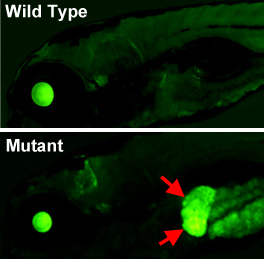Postdoctoral Position - Epigenetics
Epigenetics of Development
A fully funded postdoctoral position is available to study epigenetics of development in the zebrafish and in complementary cavefish, mouse, and cell culture models in the laboratory of Dr. Brant Weinstein in the NICHD Division of Developmental Biology (DDB) in Bethesda, Maryland. The Weinstein laboratory uses a variety of molecular, cellular, genetic, transgenic, microscopic imaging, and next-gen sequencing approaches to study the role of epigenetics during development. For examples of some of our recent work in this area please see:
Epigenetic regulation of hematopoiesis by DNA methylation: https://www.ncbi.nlm.nih.gov/pubmed/26814702
An epigenetic mechanism for cavefish eye degeneration: https://www.ncbi.nlm.nih.gov/pubmed/29807993
Current projects include the first-ever large-scale forward-genetic screen in a vertebrate for genetic mutants causing defects in tissue-specific epigenetic regulators. This highly successful ongoing screen uses novel transgenic epigenetic reporter lines and next-gen sequence technologies to identify novel vertebrate epigenetic regulatory factors. Characterization of the newly identified epigenetic regulators from this screen is yielding important, high-impact new information about tissue-specific epigenetic regulation in vertebrates.
 The scientific environment, resources, and stipend support for this position are superb. Learn more about the Division of Developmental Biology and the Weinstein Lab.
The scientific environment, resources, and stipend support for this position are superb. Learn more about the Division of Developmental Biology and the Weinstein Lab.
Interested applicants should have a Ph.D. or M.D. and less than 3 years' postdoctoral experience. Applicants possessing both a strong biological research background and some experience with NGS data analysis (e.g., RNA-seq, ChIP-seq, Bisulfite-seq, etc.) are encouraged to apply. To apply, send a curriculum vitae, bibliography, cover letter with a brief description of research experience and interests, and the names of 3 references (with phone numbers) via e-mail to weinsteb@mail.nih.gov and to amy.parkhurst@nih.gov
The NIH is dedicated to building a diverse community in its training and employment programs.
IMAGE: The image above shows lateral views of the head and anterior trunk of wild type (top) and epigenetic silencing mutant (bottom) zebrafish. The mutant causes loss of epigenetic silencing in the liver (red arrows), as visualized with a novel transgenic reporter line developed in the Weinstein Lab that permits dynamic, tissue-specific visualization of epigenetic silencing in living animals.
 BACK TO TOP
BACK TO TOP